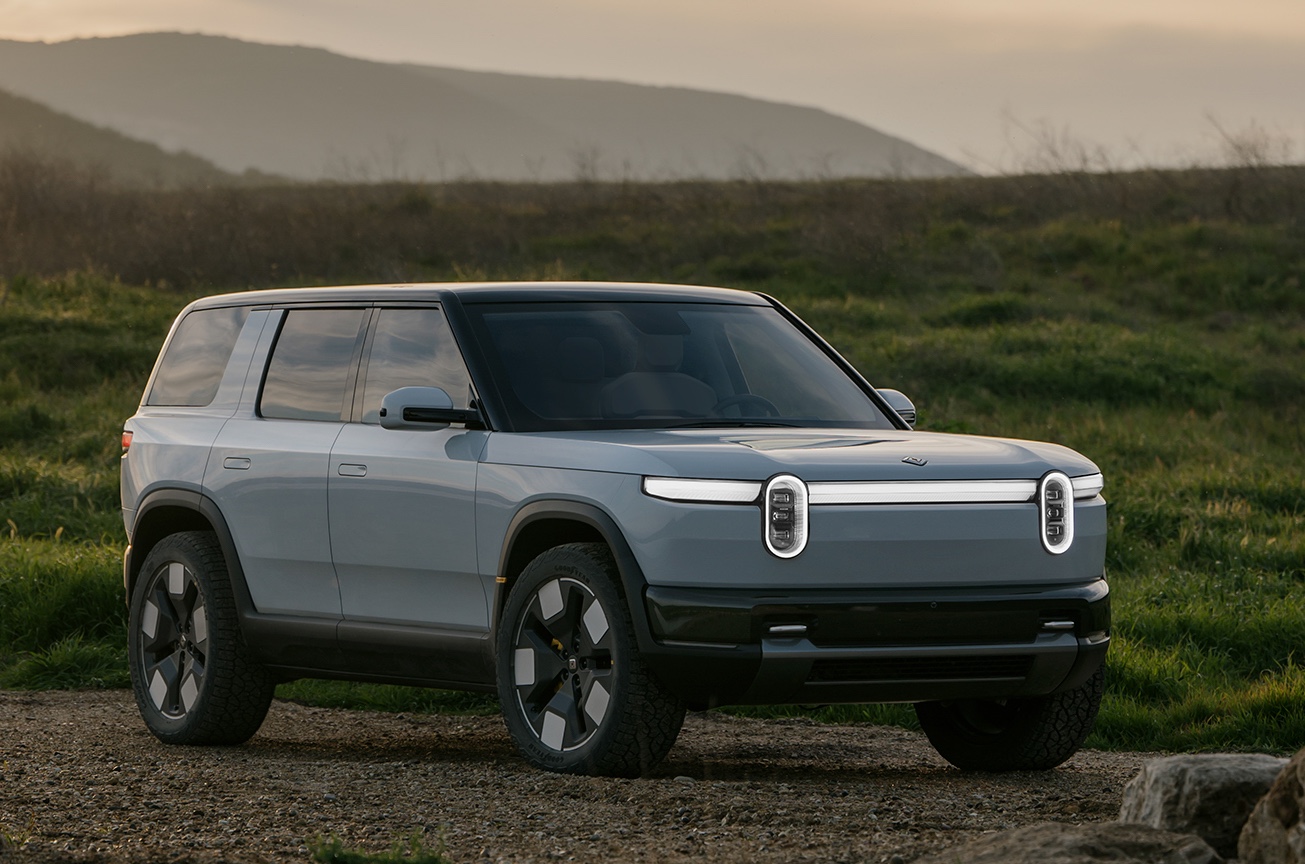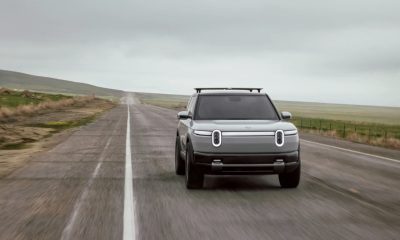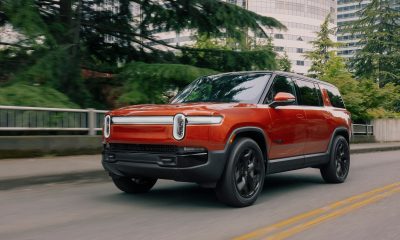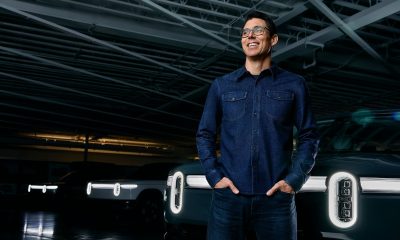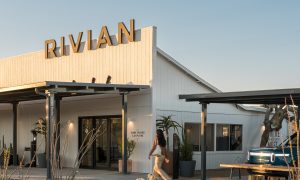Rivian has unveiled the R2, its next-generation platform. The all-electric crossover is expected to bring Rivian into the next chapter of its growth as an automaker. It is also expected to allow Rivian to scale its operations, making it a mainstream automaker.
Rivian CEO RJ Scaringe presented the R2 to an enthusiastic audience. Following is a quick overview of the Rivian R2.
Exterior
The Rivian R2 looks very similar to the Rivian R1S. Just like the flagship SUV, it features a large frunk that could fit some luggage and gear. At the rear, the R2 includes some features that provide an open-air experience, such as quarter windows that pop out and a rear glass window that drops down. The drop-down rear glass of the R2 also makes loading items to the all-electric crossover’s trunk much easier.
Introducing R2.
⚡️0-60 under 3 seconds.
⚡️Up to 300+ miles of range.
⚡️Room for five and all your gear.
Reserve yours now: https://t.co/1H408AWcA4
Deliveries expected to begin in the first half of 2026. The features, options and digital displays shown are subject to… pic.twitter.com/xC5ZjyaoCL— Rivian (@Rivian) March 7, 2024
Size-wise, Scaringe noted that the Rivian R2 is about 400 mm (15.7 inches) shorter than the R1S. A slide used in the presentation noted that the R2 has a length of 4715 mm (185.6 inches), a height of 1700 mm (66 inches), and a wheelbase of 2935 mm (115.5 inches). This should make the all-electric crossover easier to maneuver and drive. Its compact size should also help it fit in tight spaces and garages.
Interior
The Rivian executive noted that despite its more compact dimensions compared to the R1S, the R2 is designed to feel spacious inside. “It feels so inviting,” Scaringe said. Like the R1T and R1S that came before it, the R2 is also a vehicle that’s designed to be taken outdoors. It was thus no surprise to see that the R2’s second and first-row seats are capable of folding flat for an optimal car camping experience.
Take a 360-degree tour of R2. pic.twitter.com/euyJkScRYq— Rivian (@Rivian) March 7, 2024
Much to the amusement of the audience, Scaringe noted that the R2 features two gloveboxes and Rivian’s trademark in-door flashlight. Steering wheel controls are dominated by two large scroll wheels, which is not unlike what’s used in the previous generation Tesla Model 3. Scaringe also noted that the R2 features 11 cameras and a suite of five radar sensors, four in the corners and one long range radar in front. The cameras and radar should help the Rivian R2’s planned self-driving features.
Specs
Scaringe did not share much about the Rivian R2’s specs, though he did state that the vehicle would be equipped with a battery pack comprised of 4695 cylindrical cells, which are larger than the 21 mm cells used in the R1 platform. It should also be noted that the Rivian R2 will feature a structural bombardment pack, which means that the top of the battery will be the floor of the vehicle itself.
Every seat in R2 can lay flat for the ultimate car camping experience. pic.twitter.com/hDH3c17y5N— Rivian (@Rivian) March 7, 2024
The Rivian R2 will be offered in three versions: a Single Motor Rear Wheel Drive (RWD) variant, a Dual Motor All Wheel Drive (AWD) variant, and a Tri-Motor variant with two motors on the back and one motor at the front. Scaringe noted that all three R2 variants are expected to achieve over 300 miles of range. The Tri-Motor R2 is expected to achieve a 0-60 mph time of less than 3 seconds.
Price and Release Date
The Rivian R2 is expected to start at $45,000. While Scaringe did not discuss details on the vehicle’s pricing, this amount is likely true for the entry-level RWD version. Still, $45,000 is quite competitive, as the Tesla Model Y, a best-selling all-electric crossover, starts at $43,990 before options today.
Feel the breeze from all directions with the R2’s 360-degree open air experience, including powered rear glass. pic.twitter.com/GMKOEg5HpW— Rivian (@Rivian) March 7, 2024
Scaringe noted that the Rivian R2 is expected to start deliveries in the second half of 2026. The vehicle will initially be built at Rivian’s Normal, IL facility.
Watch Rivian’s R2 unveiling in the video below.
Don’t hesitate to contact us with news tips. Just send a message to simon@teslarati.com to give us a heads up.
Investor's Corner
Tesla delivers 384,000 vehicles in Q2 2025, deploys 9.6 GWh in energy storage
The quarter’s 9.6 GWh energy storage deployment marks one of Tesla’s highest to date.
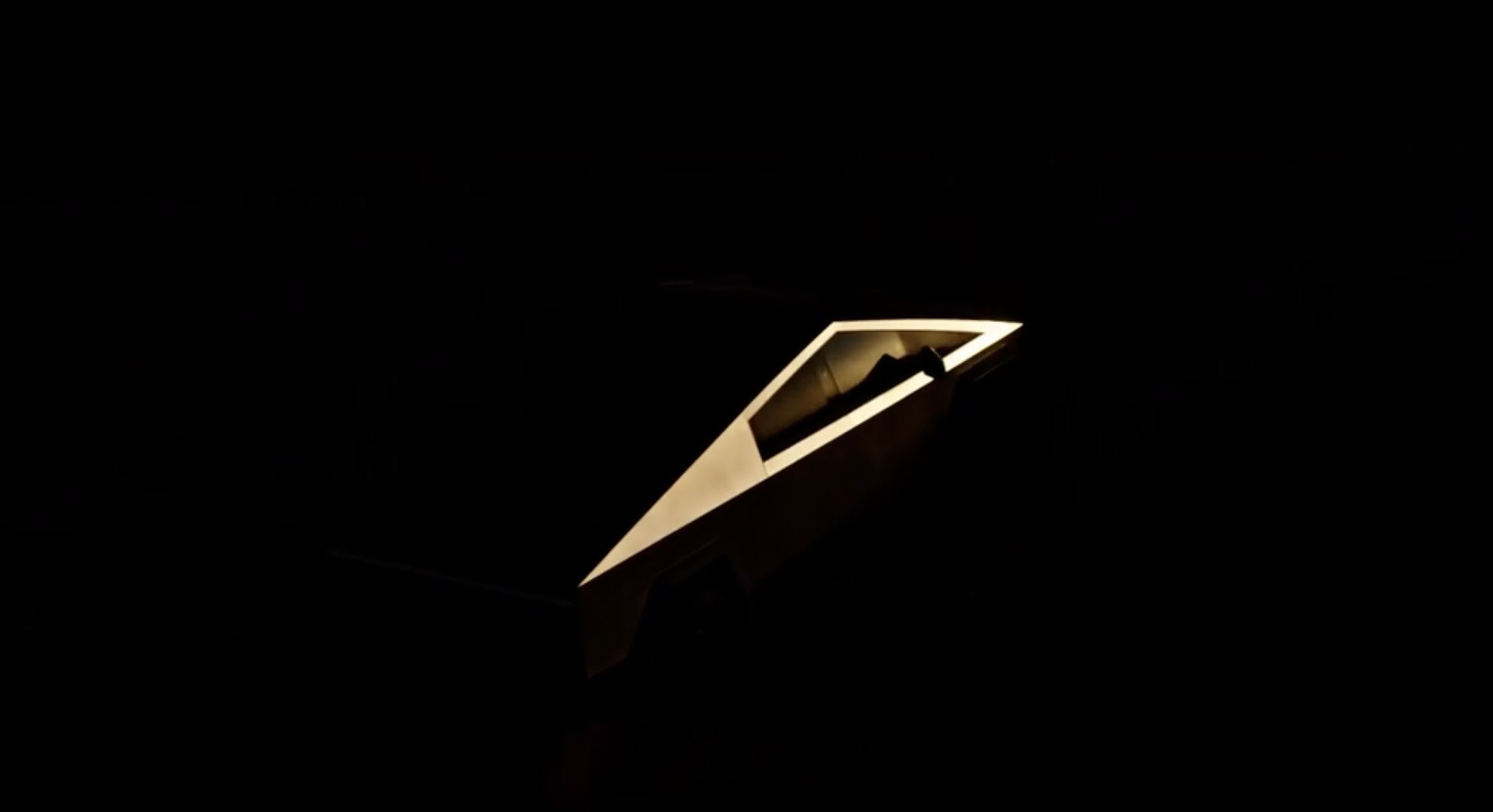
Tesla (NASDAQ: TSLA) has released its Q2 2025 vehicle delivery and production report. As per the report, the company delivered over 384,000 vehicles in the second quarter of 2025, while deploying 9.6 GWh in energy storage. Vehicle production also reached 410,244 units for the quarter.
Model 3/Y dominates output, ahead of earnings call
Of the 410,244 vehicles produced during the quarter, 396,835 were Model 3 and Model Y units, while 13,409 were attributed to Tesla’s other models, which includes the Cybertruck and Model S/X variants. Deliveries followed a similar pattern, with 373,728 Model 3/Ys delivered and 10,394 from other models, totaling 384,122.
The quarter’s 9.6 GWh energy storage deployment marks one of Tesla’s highest to date, signaling continued strength in the Megapack and Powerwall segments.

Year-on-year deliveries edge down, but energy shows resilience
Tesla will share its full Q2 2025 earnings results after the market closes on Wednesday, July 23, 2025, with a live earnings call scheduled for 4:30 p.m. CT / 5:30 p.m. ET. The company will publish its quarterly update at ir.tesla.com, followed by a Q&A webcast featuring company leadership. Executives such as CEO Elon Musk are expected to be in attendance.
Tesla investors are expected to inquire about several of the company’s ongoing projects in the upcoming Q2 2025 earnings call. Expected topics include the new Model Y ramp across the United States, China, and Germany, as well as the ramp of FSD in territories outside the US and China. Questions about the company’s Robotaxi business, as well as the long-referenced but yet to be announced affordable models are also expected.
News
Tesla China breaks 8-month slump by selling 71,599 vehicles wholesale in June
Tesla China’s June numbers were released by the China Passenger Car Association (CPCA) on Tuesday.
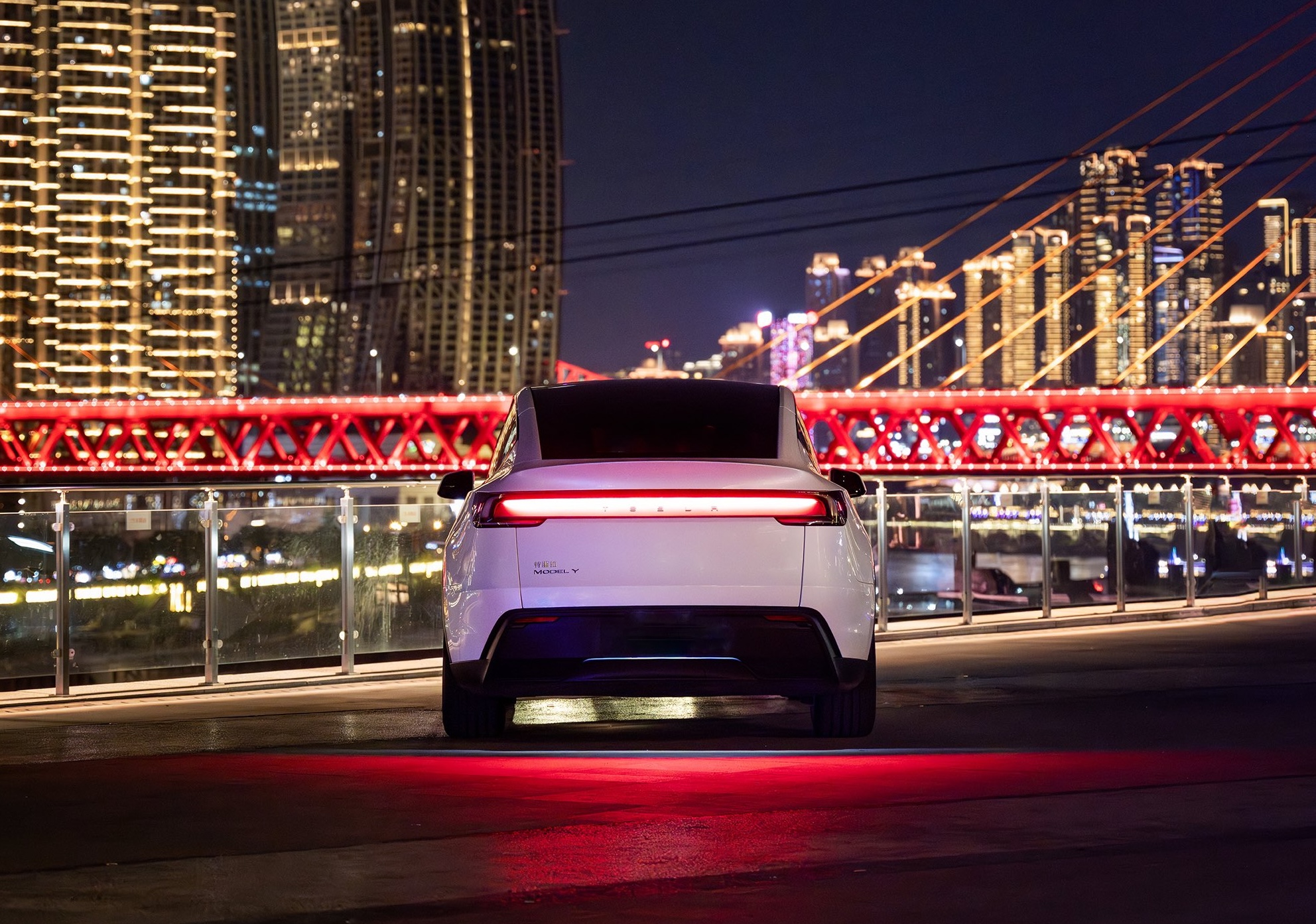
Tesla China was able to sell 71,599 vehicles wholesale in June 2025, reversing eight consecutive months of year-over-year declines. The figure marks a 0.83% increase from the 71,599 vehicles sold wholesale in June 2024 and a 16.1% jump compared to the 61,662 vehicles sold wholesale in May.
Tesla China’s June numbers were released by the China Passenger Car Association (CPCA) on Tuesday.
Tesla China’s June results in focus
Tesla produces both the Model 3 and Model Y at its Shanghai Gigafactory, which serves as the company’s primary vehicle export hub. Earlier this year, Tesla initiated a changeover for its best-selling vehicle, the Model Y, resulting in a drop in vehicle sales during the first and second quarters.
Tesla’s second-quarter China sales totaled 191,720 units including exports. While these numbers represent a 6.8% year-over-year decline for Tesla China, Q2 did show sequential improvement, rising about 11% from Q1 2025, as noted in a CNEV Post report.
For the first half of the year, Tesla sold 364,474 vehicles wholesale. This represents a 14.6% drop compared to the 426,623 units sold wholesale in the first half of 2024.
China’s competitive local EV market
Tesla’s position in China is notable, especially as the new Model Y is gaining ground in the country’s BEV segment. That being said, Tesla is also facing competition from impressive local brands such as Xiaomi, whose new YU7 electric SUV is larger and more affordable than the Model Y.
The momentum of the YU7 is impressive, as the vehicle was able to secure 200,000 firm orders within three minutes and over 240,000 locked-in orders within 18 hours. Xiaomi’s previous model, the SU7 electric sedan, which is aimed at the Tesla Model 3, also remains popular, with June deliveries surpassing 25,000 units for the ninth straight month.
While China’s EV market is getting more competitive, Tesla’s new Model Y is also ramping its production and deliveries. Needless to say, Tesla China’s results for the remaining two quarters of 2025 will be very interesting.
Elon Musk
Tesla reveals it is using AI to make factories more sustainable: here’s how
Tesla is using AI in its Gigafactory Nevada factory to improve HVAC efficiency.

Tesla has revealed in its Extended Impact Report for 2024 that it is using Artificial Intelligence (AI) to enable its factories to be more sustainable. One example it used was its achievement of managing “the majority of the HVAC infrastructure at Gigafactory Nevada is now AI-controlled” last year.
In a commitment to becoming more efficient and making its production as eco-friendly as possible, Tesla has been working for years to find solutions to reduce energy consumption in its factories.
For example, in 2023, Tesla implemented optimization controls in the plastics and paint shops located at Gigafactory Texas, which increased the efficiency of natural gas consumption. Tesla plans to phase out natural gas use across its factories eventually, but for now, it prioritizes work to reduce emissions from that energy source specifically.
It also uses Hygrometric Control Logic for Air Handling Units at Giafactory Berlin, resulting in 17,000 MWh in energy savings each year. At Gigafactory Nevada, Tesla saves 9.5 GWh of energy through the use of N-Methylpyrrolidone refineries when extracting critical raw material.
Perhaps the most interesting way Tesla is conserving energy is through the use of AI at Gigafactory Nevada, as it describes its use of AI to reduce energy demand:
“In 2023, AI Control for HVAC was expanded from Nevada and Texas to now include our Berlin-Brandenburg and Fremont factories. AI Control policy enables HVAC systems within each factory to work together to process sensor data, model factory dynamics, and apply control actions that safely minimize the energy required to support production. In 2024, this system achieved two milestones: the majority of HVAC infrastructure at Gigafactory Nevada is now AI-controlled, reducing fan and thermal energy demand; and the AI algorithm was extended to manage entire chiller plants, creating a closed-loop control system that optimizes both chilled water consumption and the energy required for its generation, all while maintaining factory conditions.”
Tesla utilizes AI Control “primarily on systems that heat or cool critical factory production spaces and equipment.” AI Control communicates with the preexisting standard control logic of each system, and any issues can be resolved by quickly reverting back to standard control. There were none in 2024.
Tesla says that it is utilizing AI to drive impact at its factories, and it has proven to be a valuable tool in reducing energy consumption at one of its facilities.
-

 Elon Musk2 days ago
Elon Musk2 days agoTesla investors will be shocked by Jim Cramer’s latest assessment
-

 News7 days ago
News7 days agoTesla Robotaxi’s biggest challenge seems to be this one thing
-

 News2 weeks ago
News2 weeks agoTesla’s Grok integration will be more realistic with this cool feature
-

 Elon Musk2 weeks ago
Elon Musk2 weeks agoElon Musk slams Bloomberg’s shocking xAI cash burn claims
-

 News2 weeks ago
News2 weeks agoTexas lawmakers urge Tesla to delay Austin robotaxi launch to September
-

 News2 weeks ago
News2 weeks agoTesla dominates Cars.com’s Made in America Index with clean sweep
-

 Elon Musk1 week ago
Elon Musk1 week agoFirst Look at Tesla’s Robotaxi App: features, design, and more
-

 Elon Musk2 weeks ago
Elon Musk2 weeks agoTesla Robotaxis are becoming a common sight on Austin’s public roads

